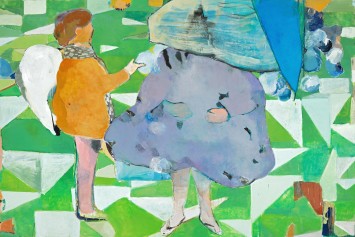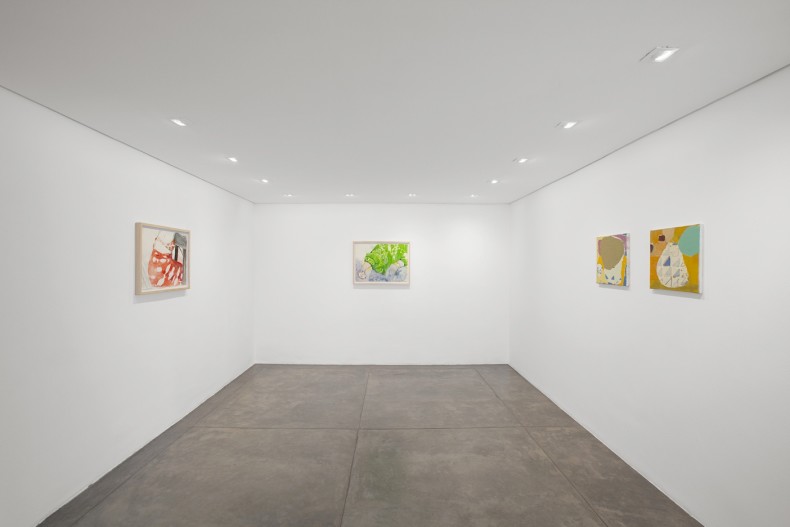The formal richness of the work of Cristina Canale, one of the foremost Brazilian painters in activity, can be seen up close in her new solo show at Galeria Nara Roesler. The exhibit opens on July 26, featuring approximately 12 pieces created in 2013 and 2014, and further highlighting the connections between figuration and abstraction that have driven the artist’s ceaseless research since 1993.
On conceptualizing the works in the show, Canale says: "I have strived to create territories of abstraction within a figurative context. These abstract areas arise, for instance, as backgrounds to the compositions, taking the place of an otherwise environmental context, or else they are contained within one of the elements in the painting – in the case of Menina e Vento, the woman’s dress – and thus become protagonists of the pieces. In other cases still, the geometrical is identified with a figurative element – as in the house-tent featured in the picture Casa Triângulo."
Thus, her recent output is based on the figure-abstraction pairing, with an emphasis on the organic-geometrical, subverting a division of abstract language into two distinct resources. "Abstraction as a language within Art History has developed towards the direction of the geometrical or the gestural. The areas where I employ geometrical reference also contain the gestural dimension, since the shapes receive an exclusive, not entirely graphical treatment. The idea is to confront the language of abstraction with that of figuration."
"This issue has been a part of my 'dramaturgy' since always, from different perspectives. What sets this group of works apart is the equivalence of weight between the figurate plane and abstract reference. Narrative in this series has also taken on abstract tones that are no longer literary. It is more about the atmosphere than the history,” the artist explains.
pictorial research
For Cristina Canale, the year of 1993 marked a definitive departure from a more material-based, slurry painting, along the lines of German neorealism represented by the painter group known as the 80s Generation – of which Canale was a part alongside the likes of Beatriz Milhazes and Daniel Senise (who are close friends with the artist).
According to the critic Fernando Cocchiarale, “the obsoleteness, in Germany, of the pictorial precepts that situated her within the context of the 80s Generation marks a fundamental shift in Canale’s work. Since then, one must look for changes in her work solely in the internal maturation of her creative process.”
In 1993, she moved to Berlin and embarked upon a new pictorial quest, one that changed her construction of perspective, her themes and the raw materials in her pictures, summing up the dynamics of life’s movements through tension between culture and nature, architecture and living being. In this movement, she translates the hidden flow of daily life into opposing elements.
Instead of excess paint, economic, even translucent layers that allow for superimpositions. Instead of perspective built around the vanishing point, minimal, almost plane-like three-dimensionality. In opposition to the use of rigid symbols, an alternating geometry based on architectural elements, like tiles, abandons the formal coldness by adding familiar elements and elements from living things.
In the words of curator Luiz Camillo Osorio, "The figure moves to the foreground and is being projected outward. In this sense, the image operates on an anti-perspective direction, coming from inside the canvas and heading outward, rather than leading one’s gaze towards a vanishing point. The viewer’s gaze gains density and fluidity, assuming a materiality that virtual images lack. The painting is a reserve in the face of the boundless manipulation of things. While standing before Cristina Canale’s paintings, we are always waiting for a triggering of the world as color."







